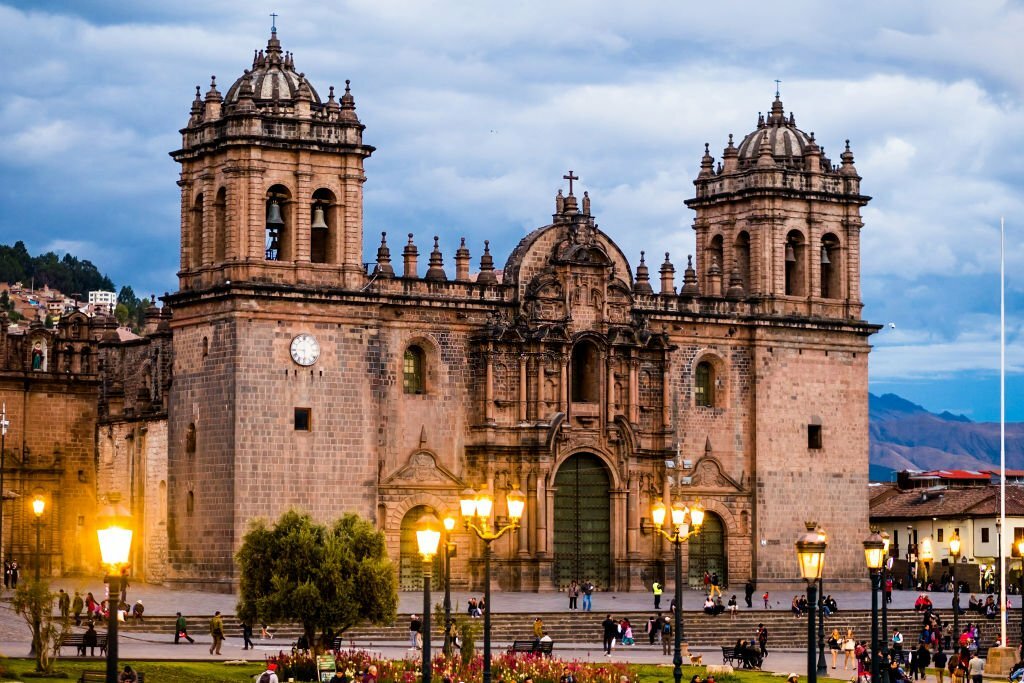Nestled in the historic heart of Cusco, Peru, the Cusco Cathedral stands as a testament to the city’s rich cultural tapestry and the enduring legacy of the Inca and Spanish colonial influences. With its imposing facade, intricate architecture, and an unparalleled collection of religious art, the cathedral holds a central place in Cusco’s historical and spiritual narrative.
1. Historical Tapestry:
Constructed on the foundations of the Inca palace of Viracocha, the Cusco Cathedral is a living amalgamation of Inca stonework and Spanish colonial architecture. Its construction began in the late 16th century, and the cathedral was consecrated in 1669. The cathedral, often referred to as the Cathedral Basilica of the Assumption of the Virgin, encapsulates centuries of cultural shifts and artistic evolution in the Andean region.
2. Architectural Splendor:
The facade of the Cusco Cathedral is a stunning example of Spanish Renaissance architecture. Crafted from the distinctive light-grayish andesite stone, the facade is adorned with intricate carvings, sculptures, and symbolic motifs. The ornate detailing reflects the skilled craftsmanship of indigenous artisans and European masons who collaborated on its construction.
3. Interior Grandeur:
Stepping inside the Cusco Cathedral unveils a world of grandeur and religious devotion. The interior is a showcase of colonial artistry, featuring gold leaf altars, finely carved wooden choir stalls, and an array of religious paintings from the Cusco School. The cathedral houses a remarkable collection of colonial-era paintings that depict scenes from the Bible infused with indigenous Andean elements.
4. The Cusco School of Art:
The Cusco School of Art, a distinctive artistic movement that emerged in the colonial period, is well represented within the cathedral. This unique fusion of indigenous and European artistic styles is evident in the paintings adorning the cathedral’s walls. The artworks often depict biblical scenes but with a cultural twist, incorporating indigenous flora, fauna, and dress.
5. The Altars and Chapels:
The Cusco Cathedral features numerous side chapels, each dedicated to a specific saint or religious theme. Among them, the Chapel of the Holy Family stands out for its delicate woodwork and Baroque altar. The Chapel of Our Lady of the Remedies and the Chapel of Saint John the Baptist are additional treasures within the cathedral, offering visitors an immersive experience in the history of religious devotion in Cusco.
6. The Main Altar:
The main altar, adorned with gold leaf, is a focal point of the cathedral. It houses a stunning array of religious icons and sculptures. The high altar is dedicated to the Assumption of the Virgin Mary and is a masterpiece of colonial-era craftsmanship. The opulence and intricate detail of the main altar reflect the wealth and influence of the Catholic Church during the colonial period.
7. Relics and Artifacts:
The Cusco Cathedral safeguards a collection of religious relics and artifacts, including intricately adorned chalices, monstrances, and vestments. The cathedral’s sacristy is a repository of ecclesiastical treasures, providing insight into the religious practices of the colonial era.
8. Cultural and Spiritual Significance:
Beyond its architectural and artistic significance, the Cusco Cathedral holds immense cultural and spiritual importance for the people of Cusco. It remains an active place of worship, hosting religious ceremonies, processions, and festivals that reflect the deep intertwining of Catholicism and indigenous beliefs.
In conclusion, the Cusco Cathedral is a living chronicle of Cusco’s complex history, a testament to the blending of indigenous and Spanish colonial influences. As visitors marvel at the cathedral’s facade, immerse themselves in its opulent interiors, and witness the interplay of cultures through its artworks, they embark on a journey through time. The Cusco Cathedral not only stands as a monument of architectural brilliance but also serves as a symbol of resilience, adaptation, and the enduring spirit of a city that has witnessed centuries of transformation in the heart of the Andes.
Book here.










Comment (0)